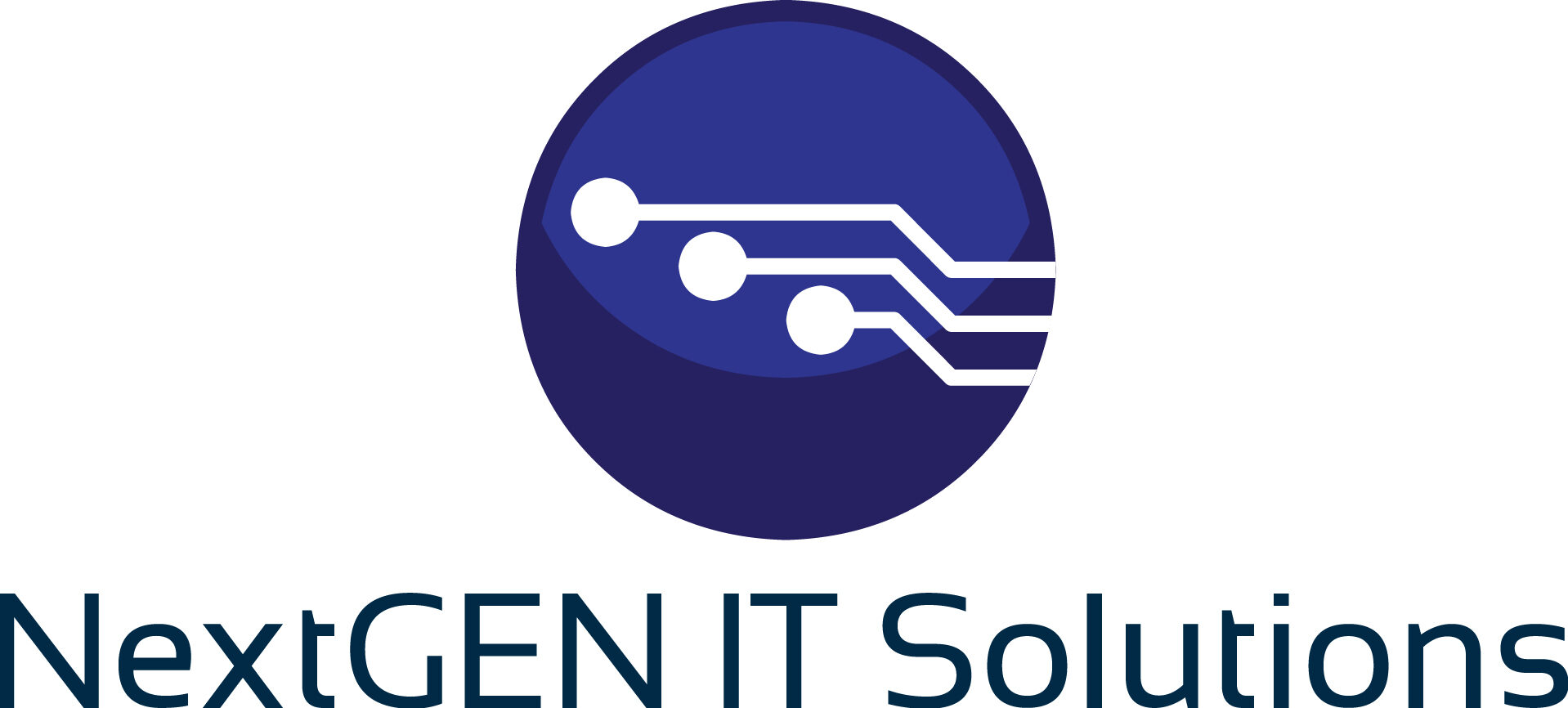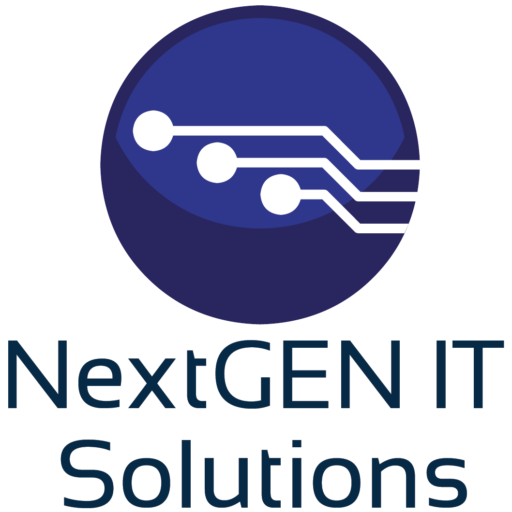
Introduction to Cloud Computing
Cloud computing refers to the delivery of computing services, including storage, processing power and applications, over the internet, or ‘the cloud’, enabling users to harness powerful computing resources without the need for local hardware and software, thereby democratizing access to cutting-edge technologies.
SaaS delivers applications over the internet so users can start using them without having to install and maintain the software locally; PaaS provides a platform for developers to build, test and deploy applications so that they can focus on developing, instead of worrying about hosting; finally IaaS is about virtualized computing resources over the internet that provide a virtual machine, storage and network capability so that the underlying IT infrastructure can be elastically provided to the needs of users.
While the history of cloud computing goes back decades to the 1960s, when the computer scientist John McCarthy said that computing should be delivered like a public utility, only since the late 20th and early 21st centuries have we begun to see the emergence of ubiquitous computing based on the virtualization of resources, distributed computation and high-bandwidth internet.
Starting in the early years of this century and especially from the past decade, major tech companies, including Amazon, Google and Microsoft, began providing popular cloud computing services, making this model a huge game-changer for how IT infrastructure and services are provided. This has established a new layer of hybrid IT, consisting of Cloud (having all its dimensions such as private cloud, public cloud, multi-cloud and hybrid) and IT infrastructure, which is the foundation of any organisation in terms of innovation, running different business processes and solutions in order to achieve operational efficiency, as well as the ability to scale up business needs in a quick and cost-effective manner.
As a result, cloud computing – whether public, private, or hybrid – is key to any digital transformation strategy. It’s the foundation on which we run hundreds, if not thousands, of applications. From data storage and backup to databases and machine learning, cloud computing has become a key enabler of innovation and development in the digital age.
The Benefits of Cloud Computing
Cloud computing provides a wide variety of wonderful advantages for both business and individual users. Firstly, it is very cost effective. By using cloud services, companies can considerably cut cost, such as expenditure on hardware and equipment, maintenance and energy use. They no longer need to spending extra money on buying server devices, hence capital expense and operation cost will be significantly reduced. Meanwhile, all the data and software will be paid only if itis used, meaning that there will be no excess payment and all budgets can be effectively allocated.
Another major advantage of the cloud is elasticity or scalability. In the fast-paced business world of today, a high degree of agility is essential. Since businesses can scale-up or scale-down their IT resources on-demand, computing expenses of organizations can be managed as per seasonal demands avoiding either excessive infrastructure investment or loss of resources. For example, during peak seasonal cycles, organizations can add additional infrastructure as needed.
Modern solutions like these are also characterized by the flexibility that cloud solutions offer. No matter where your employees are located – they can access the resources of the cloud from any place with the internet connection being available, and this is especially important, for example, in the context of remote work. Another aspect that plays a role here is collaboration efficiency, as thanks to the cloud, users can access the same data at the same time, this leads to the increase in business efficiency and the possibility of innovation.
Another benefit is disaster recovery. Data backed up in the cloud comes with plenty of security insurance in case users experience a problem or an emergency. Traditional disaster-recovery methods can be slow and cost a fortune, but cloud platforms come complete with rapid recovery means to help users return to normal as fast as possible without incurring too much data loss.
With automatic updates, these types of cloud services further become invisible. As software is being hosted ‘up there’, new versions and security checks are regularly installed by the cloud provider. This way the user works with the most recent version of the software and requires no intervention to update. With every update, organizations move forward with technology, as well as with security compliance.
Cloud Deployment Models
Cloud computing solutions can be classified into various deployment models, with each solution having different characteristics, advantages and disadvantages. The draft below provides an insight into these differences and discusses business opportunities associated with cloud offerings in greater detail.
Businesses must make sure they have a clear understanding of the various deployment models of cloud computing solutions before they can fully benefit from the cloud. Otherwise, they risk wasting money on the wrong options and missing out on a reliable technology.
Firstly, cloud computing has three main types of deployment models: software-as-a-service (SaaS), platform-as-a-service (PaaS), and infrastructure-as-a-service (IaaS). SaaS refers to applications that can be accessed through the Internet, while PaaS provides a hosting service for apps through the Internet. IaaS, on the other hand, makes servers and essential software available to users via a network.
Secondly, each solution has unique advantages over the other two. For instance, IaaS is most appropriate for long-term business structures and data processes. Additionally, PaaS offers benefits to business developers who can utilize its platform to build their own applications and distribute them to others.
In conclusion, businesses have their own unique needs, and the provision of suitable cloud deployment levels is vital to achieve their goals.
Public Cloud
The public cloud is a third-party owned and operated environment that defines cloud resources as accessible by users on-demand. Increased elasticity, pay-per-use models, and minimal management requirements are some of its defining characteristics. Public clouds are designed with larger organizations in mind and were always intended for use cases such as web hosting, software development, or data storage, where cost savings, flexibility, and ease of use are the main priorities. But public clouds often leave companies worried about issues such as security, compliance, and control; not to mention the fact that most of them are simply not ready to play ball with their customers’ sensitive data.
Private Cloud
Private cloud is a set of computing services offered either over the internet or on a private internal network dedicated exclusively to the use of a single organization. Its main advantages are increased security, compliance and control – and indeed, private cloud is used by organizations that have strict data privacy and regulatory needs. Industries such as finance and healthcare often rely on private cloud to protect sensitive data and applications. The key challenges include higher costs and increased management responsibility, and scaling might not be as easily achieved as it is with public clouds.
Hybrid Cloud
A hybrid cloud is supposed to offer the best of both worlds by combining the benefits of public and private clouds so that they largely complement one another, with modular portability of workloads, orchestration across environments, and overall improved optimization and security. In this case, a business can use the hybrid model to stay within legal and governmental compliance requirements while being in sync with diverse cloud services (including shared servers, private cloud dedicated to sensitive applications, and third-party applications). For example, an eCommerce company can use a private cloud to process and store customer data and thus maintain control over it, while using the public cloud to enable large-scale web applications during peak traffic hours. The main challenges here are orchestration complexities and smooth integration of environments because of an increased number of networks and components that form overall network structure.
Multi-Cloud
As the name suggests, multi-cloud means utilizing multiple cloud services provided by different companies to avoid vendor lock-in and achieve greater resilience. By choosing the best services offered by each provider, multi-cloud can be more performant and cost-efficient than using a single cloud service. This multi-cloud model makes sense for any organization seeking redundancy and risk mitigation. To ensure its availability and reliability in various regions, a multinational enterprise may, for instance, run some of its activities on the AWS cloud in North America, others on the Google Cloud in Europe, and its mission critical activities on the Microsoft Azure in the rest of the world. However, managing and orchestrating several cloud environments can be complex and expensive, requiring special skills and dedicated tools.
Key Cloud Service Providers
Each of these clouds will resonate with different business requirements featuring innovation, but broadly speaking there are three vanguards AWS, Microsoft Azure, Google Cloud Platform that can be considered the biggest cloud leaders and prime providers. These clouds offer a wide assortment of services under different categories related to communication, networking, and Machine learning.
- Amazon Web Services has the most comprehensive and broadly adopted portfolio of cloud services, such as computing, machine learning, storage, database, analytics, application services, deployment, management, networking, mobile, developer tools, management tools and tools for the Internet of Things (IoT) and Management Tools. The cloud services from AWS have more than 200 fully featured services for a more flexible, cost-effective and scalability experience for business operations, such as global footprint around the world with up to 21 regions and 57 availability zones to leverage their data center from around the world. In addition, AWS’s pay-as-you-go pricing mechanism enables business to run their services provision based on their business demands.
- Microsoft Azure is another leading option here, with strong integration options for Microsoft products and services (including Windows Server, SQL Server, and Microsoft Office 365), a strong hybrid cloud capability to mix clouds or on-premises with Microsoft services, powerful AI and machine learning capabilities, solid cybersecurity tools, and with compliance services built in and baked throughout.
- Google Cloud Platform (GCP) excels when it comes to data analytics and machine learning. While Google hasn’t been as profitable as Amazon Web Services, the company’s search expertise and data management underpin world-class data analytics capabilities such as BigQuery and the TensorFlow machine-learning platform. Competitive pricing, 30 per cent sustained-use discounts and custom VM pricing can also translate into cost savings over time for businesses who plan their long-term cloud expenses carefully.
Since pricing, performance, specific services offered and geographical reach are all important, AWS is often the leader when it comes to the sheer number of services offered and their global reach; Azure is the leader when it comes to enterprise integration and hybrid capabilities; GCP is a leader when it comes to cost and data analytics; and IBM Cloud stands out as a contender when it comes to AI workloads and blockchain services. Image credit: Amazon Web Services Inc, Microsoft Corp, Alphabet Inc, International Business Machines Corp Any business taking the leap into the cloud must first carefully examine its business needs and projected growth trajectory and choose an IT strategy and solution accordingly.
Implementing Cloud Solutions
The transition to cloud computing can be complex and fraught with dangers so it must be planned carefully and strategically. An organization seeking to move to cloud must first make clear what it needs and hopes to achieve. Careful analysis of the systems and workflows in operation will show which can most benefit from a move to cloud. Stakeholders should work together to create a changing room plan with scope, time frame and resources to complete the work.
Choosing a suitable cloud model is a key decision to be taken in this journey. Enterprises can either leverage public cloud, private cloud or hybrid cloud, depending on the workload requirements, security postures and cost-sensitivity. Public clouds are good for businesses having variable workloads. Private clouds provide higher degree of security and control, which makes it an ideal cloud model for businesses having high regulatory compliance needs. Hybrid clouds combine the strengths of both public and private cloud models, thereby providing optimum performance and operational flexibility.
An equally important consideration is choosing the right provider of a cloud service. That is, you should select a provider who is reliable and offers the levels of security, certifications and independence you require. The provider’s ethics and personality should fit with your organization. You should be able to ask questions and receive answers about what the relationship with the provider entails. cloud services should be built to work with your existing systems, not against them. Rigorous evaluation of a provider based on these criteria will help position your organization to benefit from a well-considered use of cloud services.
Like any fundamental transformation, moving to the cloud poses several risks: data-migration problems, integration with legacy databases and security issues in the move are a few of them. Proper planning, reliable encryption methods and staged migration processes can lead to mitigating this risk. Also, working with experienced cloud service providers can help avoid the pitfalls of the migration process.
In the end, moving to the cloud will require careful thought, planning and decision-making – and grit and determination to change – in order to get the most out of the technology. It offers new opportunities for business and future growth.
Security and Compliance in the Cloud
As organizations begin to adopt cloud computing, they need definitive answers to security-related questions and compliance needs. Cloud computing’s characteristics of elasticity and extensibility must be balanced by the ability to support strong security to protect data and meet compliance requirements.
Cloud security is a set of practices designed to prevent breaches and unauthorized access into data storage and computer systems. Essential security features include encryption of data, multi-factor authentication, and frequent security auditing. Encryption of data makes sure that sensitive information remains unreadable when it’s transmitted and stored. Multi-factor authentication requires the person demanding access to prove their identity in multiple ways.
No matter what type of organization you’re running, whether it’s in healthcare or entertainment, there is a defined set of regulations (the General Data Protection Regulation, or GDPR; the Health Insurance Portability and Accountability Act, or HIPAA, for instance) that must be adhered to when using the cloud. These regulations dictate strict rules concerning how data should be protected and used. Organizations worldwide must have robust compliance frameworks in place to meet the regulations. GDPR, for example, requires data protection strategies that focus on user consent and the minimization of data use. Meanwhile HIPAA requires strict controls over patient data and any electronic health transactions.
From the point of view of these regulatory requirements, leading cloud service providers can cater to each of these demands, implementing several built-in security features to assist their clients on essential regulatory compliance workloads. Take Amazon Web Services (AWS), Microsoft Azure and Google Cloud Platform, which are premised on a rich set of security features. AWS Shield covers DDoS protection, continuing and automatic compliance monitoring, and numerous security and compliance services like AWS Artifact to build an audit-ready AWS environment. Similarly, Azure Security Center provides unified security management and threat protection while Google Cloud’s Security Command Center automatically detects and classifies items that might pose a risk to the organization’s security.
Just as with traditional on-premises data security, best practices for security in a cloud framework include increased employee awareness and secure-by-default technology, such as regular training to minimize malware and phishing attacks, best practice on password management, and guides to data handling are all part of bringing employees along in security consciousness. The other layers of the ASF Cloud framework are also activated, including constant interaction with the cloud provider in order to customize security settings, with regular implementation of patches and updates due to ever-changing threats.
Future Trends in Cloud Computing
With technology moving at such an incredible pace, and with ever-greater experimentation and use cases, the picture of the future of the cloud is changing all the time. The area on the horizon that interests us here is edge computing. The concept of edge computing is based on the idea that data processes and applications can be performed closer to the location where the data is generated than in a more commoditized and centralized ‘cloud’. This can cut the time it takes to respond to events (latency) and reduce the amount of bandwidth needed, allowing business decision-making to be based on real-time data. This is increasingly important in areas such as healthcare and autonomous driving, or where machinery is used in dangerous or complex environments, such as industrial automation.
A second important shift is the growth in serverless architecture. Serverless, or “function as a service”, computing gives developers a way to build and run applications without having to provision and manage servers. With this model developers don’t have to worry about vertical scale as much, meaning the application automatically uses more or fewer servers depending on the volume of users. This also avoids the costs of overprovisioning servers, which tend to increase when developers are uncertain how to balance latency against load. With serverless computing, development becomes simpler, as developers focus on just writing code and functionality, whereas cloud providers manage servers on their behalf. This leads to faster time to market for new applications.
The latest trend is integrating artificial intelligence (AI) and machine learning (ML) with cloud computing services. A great example is the AutoML Translation capability in Google Cloud: the system is using artificial intelligence to train translation models from a general machine learning dataset. Although this feature is still in beta-testing, what it shows is that cloud platforms are now turning smarter by incorporating AI and ML. As a result, enterprises can take advantage of massive datasets for analysis, better automate processes, and improve predictive analytics.
But the rise of the Internet of Things (IoT), too, that will future-proof cloud computing. IoT devices generate vast amounts of data and the ability to process, store and analyze it swiftly and efficiently is vital for the future of such services. And they are a considerable force in their own right. By 2025, IDC forecasts, there will be more than 41 billion IoT devices globally. Businesses will be crying out for the real-time analytics and remote device management that cloud services can provide. At present, many IoT devices, including entire appliances, are monitored and controlled from private data-centers running dedicated management software. As IoT expands, from the smart home to cutting-edge sectors such as industrial IoT, demand for robust cloud services is liable to increase exponentially.
While separately not groundbreaking, the convergence of edge computing, serverless architecture, AI/ML and IoT are collectively rapidly transforming how firms can engage with the cloud. Those that embrace these innovations will be best placed to be responsive to new opportunities, enhance efficiency and stay well ahead of their contemporaries.
Conclusion: Embracing the Cloud
In this quest into latest Cloud solutions, we have delved into the plethora of advantages that these technologies offer to businesses and individuals. Undoubtedly, cloud computing is a revolution in the corporate world. It’s completely “transformative”, as the World Economic Forum puts it, changing the way companies operate, manage data and deploy resources. The cloud’s flexibility and scalability allows for faster market responsiveness, and the cost savings associated with cloud services are such, that even the smallest of firms can afford to use the best technology without expensive investments.
For users, access to data and applications is whenever and wherever, which makes for a much more flexible, productive workplace. For the enterprise, the improved security controls that cloud providers can utilize help protect vital information and provide strong protection against data breaches and failure.
With the path to future growth lying in a cloud-enabled digital future, organizations are advised to assess their existing IT infrastructure, and consider how to take advantage of the promised benefits. A host of whitepapers and case studies, webinars and consultancy services are available from leading cloud providers for those ready to get started.
Using cloud computing represents a powerful commitment to innovation, placing your business in pole position to exploit the growth opportunities of the networked age. For citizens, the cloud offers a way to make better use of their downtime, giving everyone the chance to work smarter and better.



